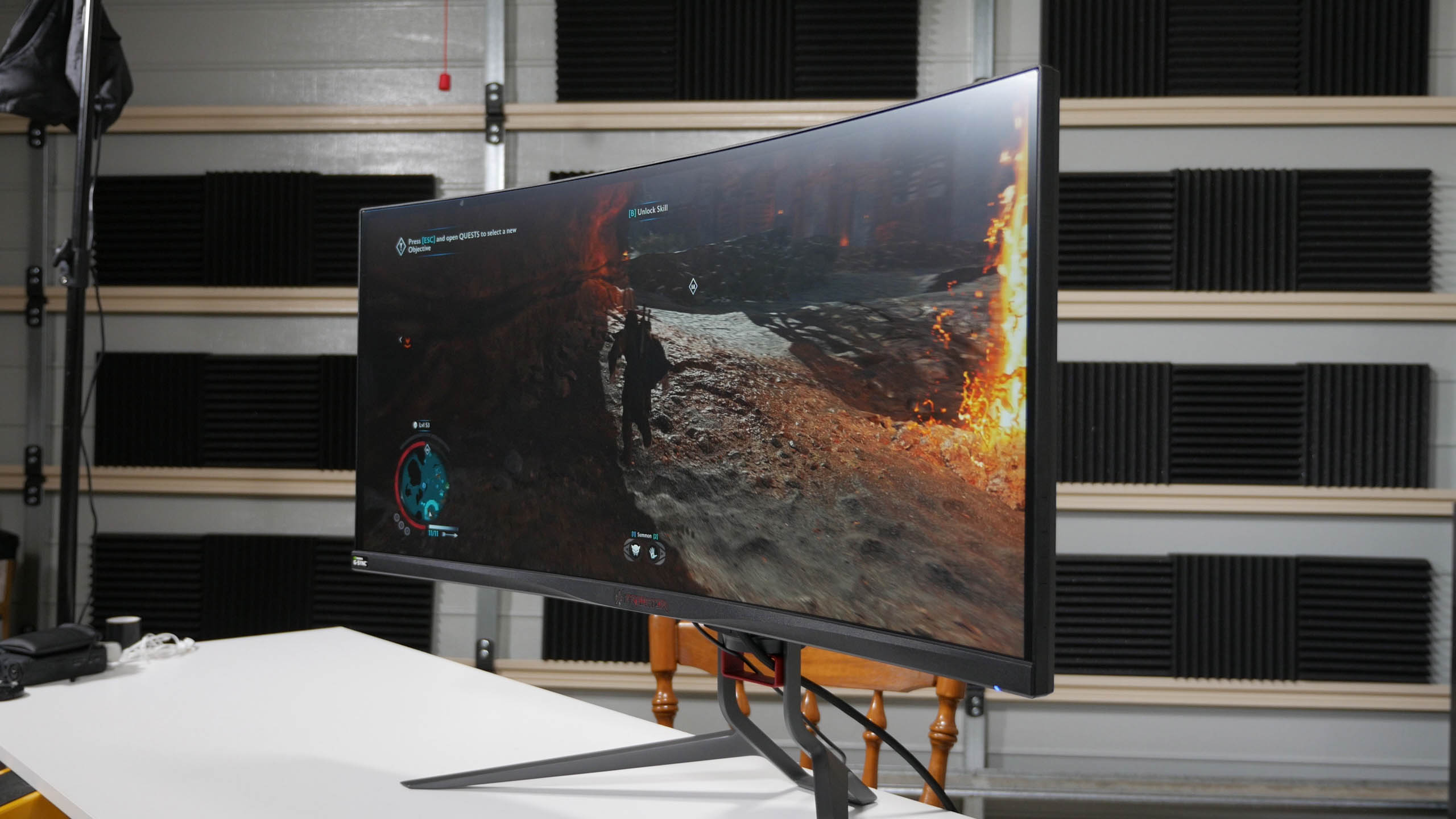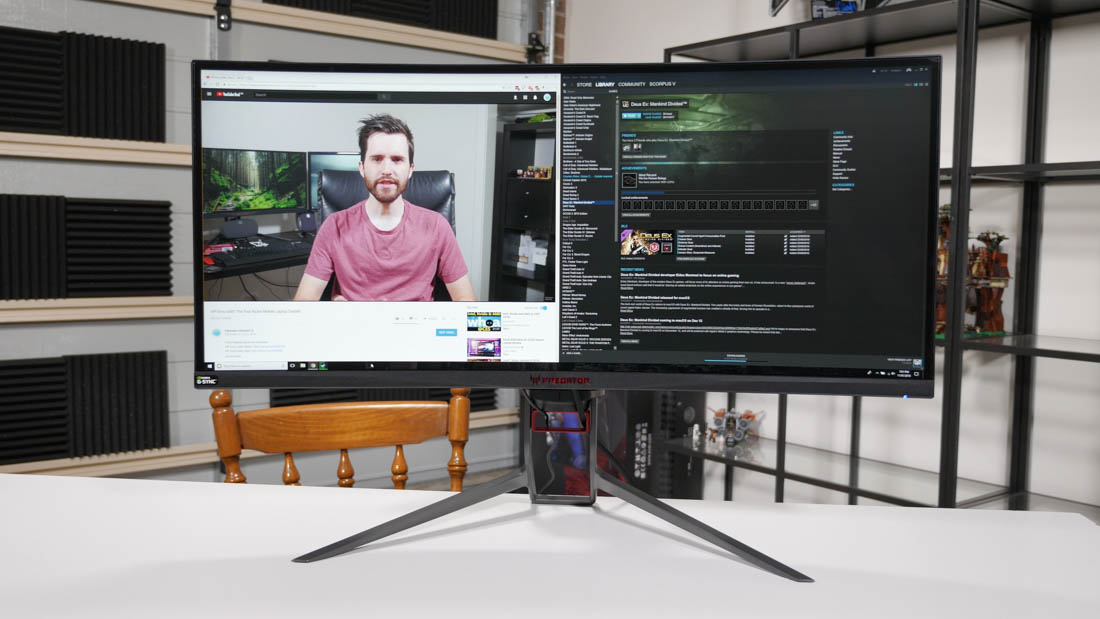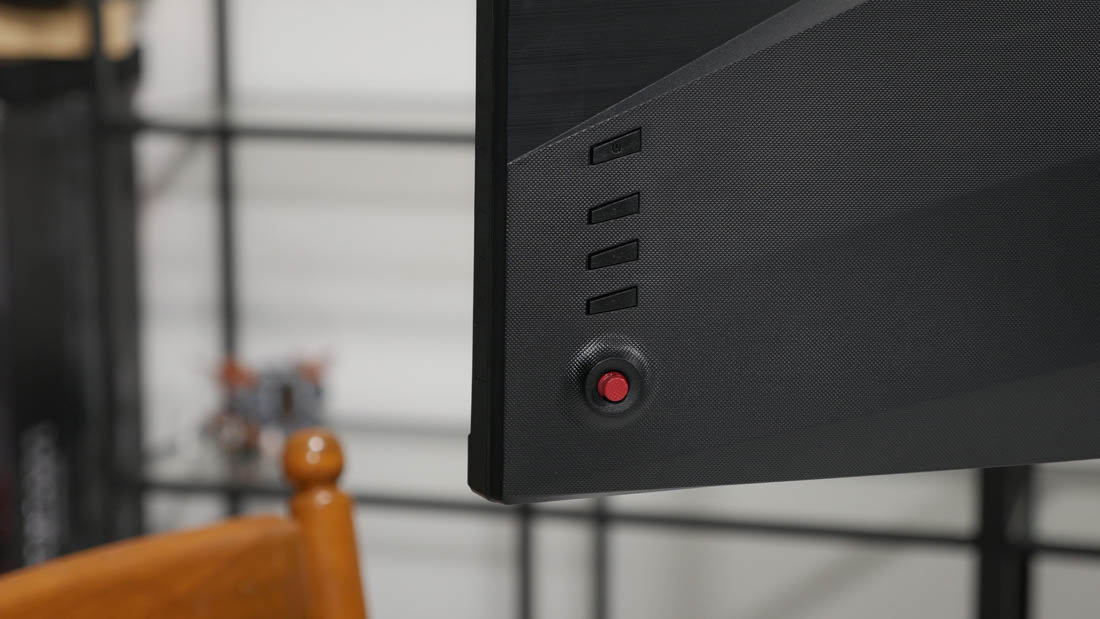For the past two years the Acer Predator X34 has remained one of the best gaming monitors on the market. I've been so satisfied with it since launch that that I've kept it as my personal monitor for both gaming and video production. I love the combination of a 34-inch 21:9 3440 x 1440 display with a 100 Hz maximum refresh rate, G-Sync, and even great color accuracy for a gaming monitor.
But this new monitor from Acer, an upgraded version of the X34, is even better in almost every way. It's called the Predator X34P, and it could be the perfect monitor to tide us over before the HDR-capable X35 finally hits the market.
As an interesting note, the Predator X34P has received its fair share of launch troubles. This monitor was actually unveiled all the way back at Computex 2016, so it's taken a long time for the new panel in this display to become ready for mass production.
And yes, there is a new panel in the X34P. It retains the same 34-inch size and 3440 x 1440 resolution as the original X34, but it now comes with a 100 Hz refresh rate as standard with the ability to easily overclock up to 120 Hz.
Previously, the X34 came as a 60 Hz monitor with a 100 Hz overclock, though some buyers couldn't hit 100 Hz stably due to flickering. The X34P solves this offering native 100 Hz with an added boost up to 120 Hz. My retail unit had no problems hitting that mark and I hope this is the case for others as well.
The other key change to the panel is a more aggressive curve, moving from 3800R to 1900R. I'm not a massive fan of curved displays, but the X34 is so wide that the increased curvature does improve the experience.
With the new 1900R curve, the edges are just slightly more in your field of view, which I like to think helps me gun down foes more easily in games. The truth is I'm probably just as mediocre as before, but with a new fancy monitor to look at.
Most other specs remain the same: IPS, 300 nits maximum brightness, a 1000:1 native contrast ratio, 4ms grey-to-grey response times, 100% sRGB coverage, and G-Sync support. Power consumption is apparently the same, too, though in my testing the X34P uses about 8W more power when overclocked to 120 Hz, and about 6W more at 100 Hz.
The X34P design has received an overhaul that fixes basically every problem with the original X34. The annoying glossy plastic has been nuked in favour of plastic with a faux-brushed metal finish, while all other plastic has received a subtle upgrade to a more classy design that better suits the monitor's lofty price tag. Unfortunately the 'chin' along the bottom remains, though this is likely a by-product of how the panel itself is designed.
The good news for slim-bezel fans like myself is the bezels have also shrunk marginally with the X34P, moving from 13mm to 10mm on most sides, which is a neat though minor upgrade. The stand has become more versatile as well, now supporting a greater range of height adjustments along with new swivel support. The stand is a bit uglier from the rear as a result, but the added flexibility is certainly a nice bonus.
The monitor gods have listened to my prayers as the X34P finally includes a directional toggle for the on-screen display, rather than the awful five-button approach of the original design. The toggle makes it so much easier to move around the OSD and make adjustments as necessary. It's complemented by three buttons for quick adjustments to input, brightness and display modes.
There's nothing revolutionary about the OSD, in here you'll find basic color controls along with overdrive settings, the overclocking option, typical features like shadow boosting and low blue light, along with additions like crosshair overlays and even a refresh rate counter. Most of the additions I never bother using, though you might find something interesting in there.
The 20 Hz refresh rate boost the X34P provides over the original is certainly not as noticeable as the jump from 60 to 100 Hz, but it's nice to get that bit of extra refresh rate headroom. Back when the X34 launched, it was much harder to hit 100 FPS at 3440 x 1440 with ultra quality settings in AAA games, but with modern cards like the 1080 Ti, this monitor's extra speed genuinely comes in handy.
Unfortunately it appears AMD users are once again left out of the party, as there's no FreeSync equivalent, leaving Acer's best 3440 x 1440 FreeSync monitor stuck at 75 Hz. This is one of the cases where the G-Sync model not only supports Nvidia's variable refresh technology, but also packs additional features exclusive to the G-Sync variant.
Acer generally makes accurate claims about the performance of their monitors, and the X34P is no exception. Contrast ratio is around 1040:1, just slightly better than what is listed on the spec sheet, while peak brightness I measured at 294 nits, close to the rated 300 nit mark. A contrast ratio of above 1000:1 is maintained throughout the brightness range too, which is good to see.
Like many curved displays, the X34P does suffer from a few uniformity issues, though it's not nearly as bad as I've seen with other panels. The right side is slightly tinted yellow relative to the center, with a maximum deltaE difference of 2.2 with an all-white display. This is somewhat noticeable when viewing solid colors.
Ghosting and pixel response appears near-identical to the X34, which means the 'normal' overdrive setting remains the ideal option for most users. The IPS panel used is fairly quick for this sort of display technology, so ghosting is not a big issue for the most part.
Viewing angles are also very good, as you'd expect from an IPS panel, though contrast ratio isn't as good as you'd see from a VA display. With that said, while the contrast ratio doesn't reach the heights of VA displays, the X34P does not exhibit any noticeable backlight bleed.






